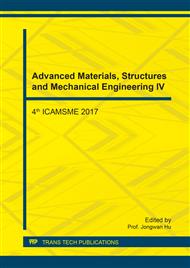p.248
p.254
p.259
p.267
p.272
p.279
p.285
p.292
p.298
Impulse Grounding Resistance of Graphite Flexible Grounding Material under Spark Effect
Abstract:
Graphite flexible grounding material is an environmentally friendly material with corrosion resistant, non-magnetic and flexible characteristic, which is gradually applied to grounding of transmission lines in recent years. In order to provide a reference for grounding grid design and impulse resistance measurement, an iterative calculation method based on electric-network theory is proposed. The equivalent method of the equivalent time-varying radius and influence of different iteration methodsonthe calculation resultsare discussed. Furthermore the accuracy of this method is compared with that of traditional ones in regulations. In the end the impulse grounding resistance of three kinds of grounding grids are calculated with this method and the empirical formulas of impulse coefficient are built. The results show that it can be considered that there is reference value in the calculation results obtained by the method in this paper, and the calculation accuracy improved as well. It obtains three typical grid structures under the impulse coefficient experience formula, and the grounding grid design and impulse resistance measurements of flexible graphite grounding electrode can provide reference. Flexible graphite grounding material has a broad application prospect in the power system grounding technology.
Info:
Periodical:
Pages:
272-278
Citation:
Online since:
November 2017
Authors:
Price:
Сopyright:
© 2017 Trans Tech Publications Ltd. All Rights Reserved
Share:
Citation:


